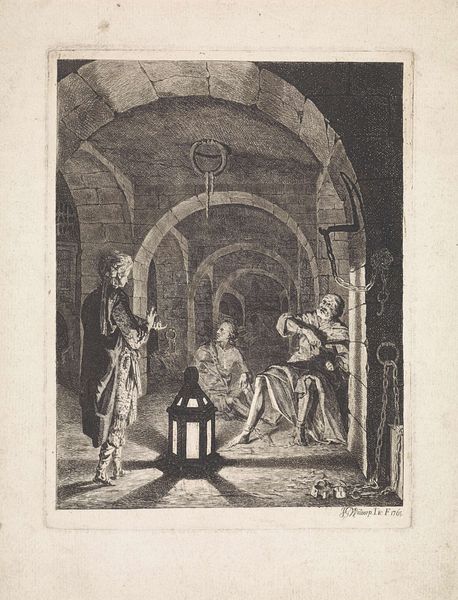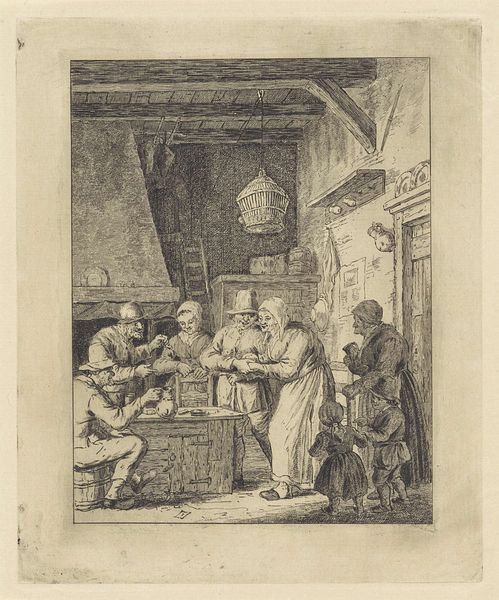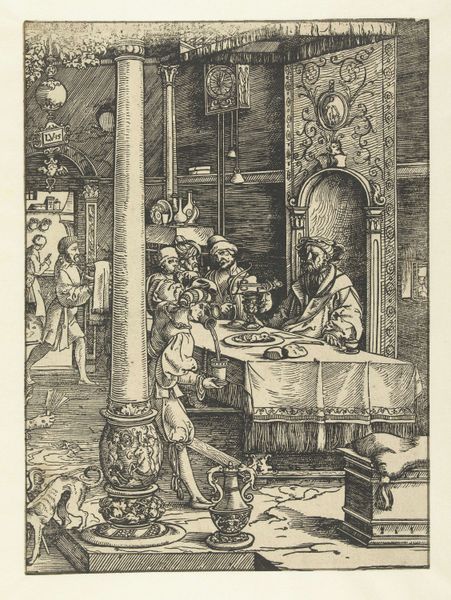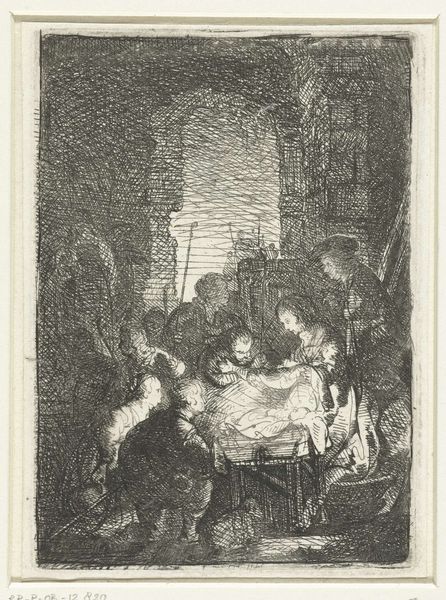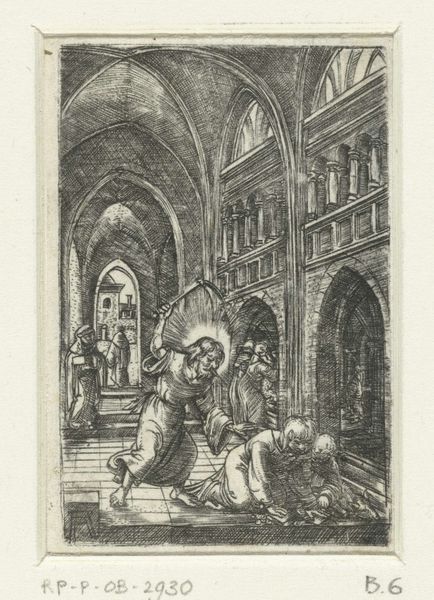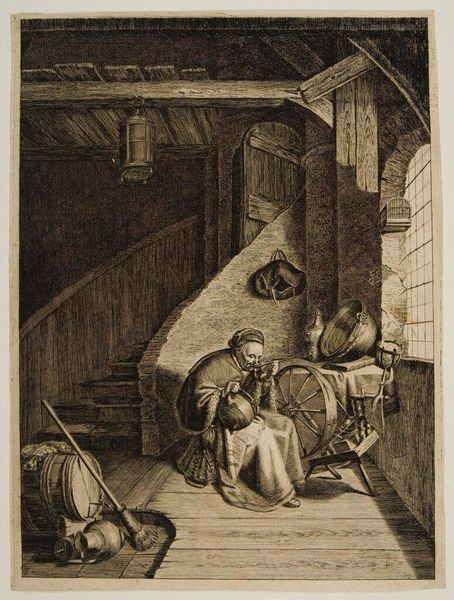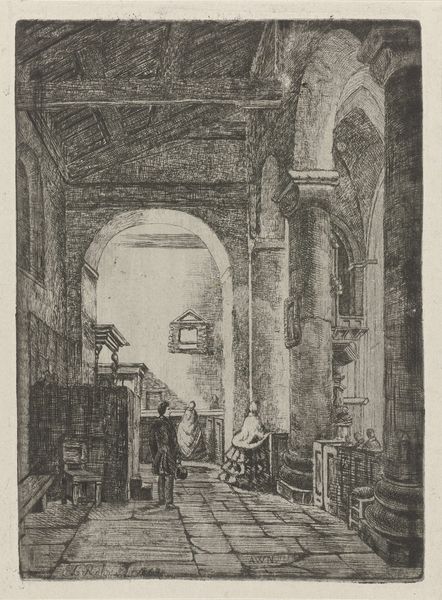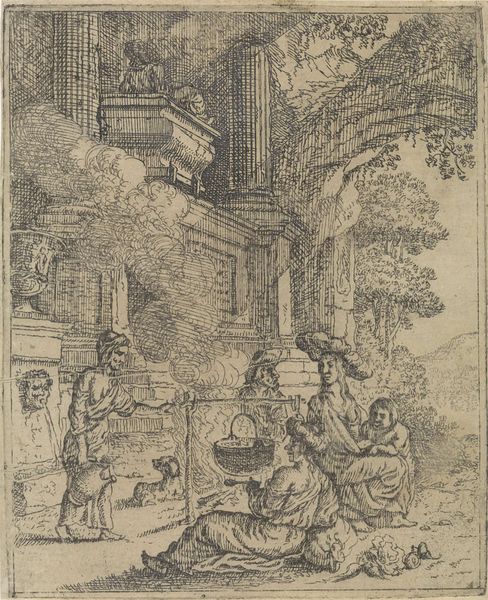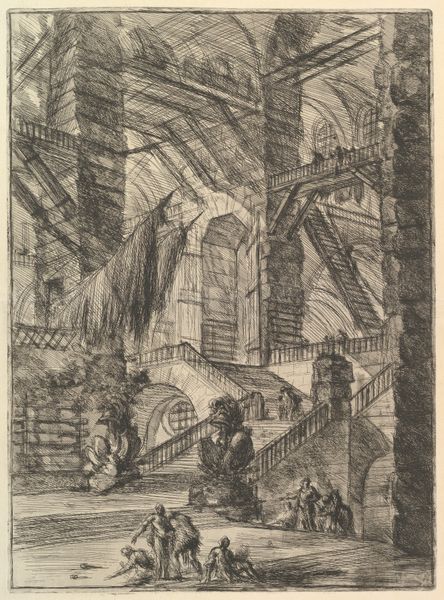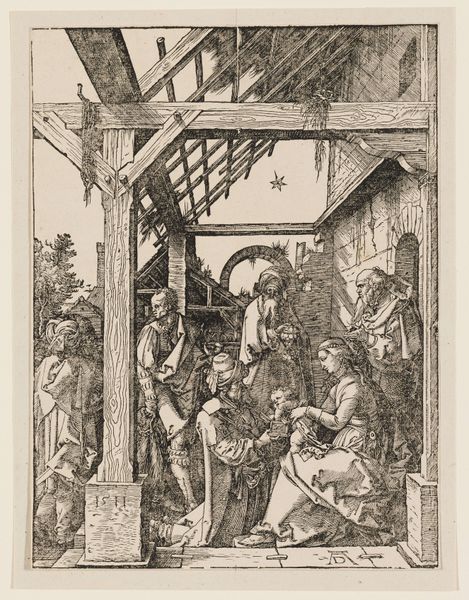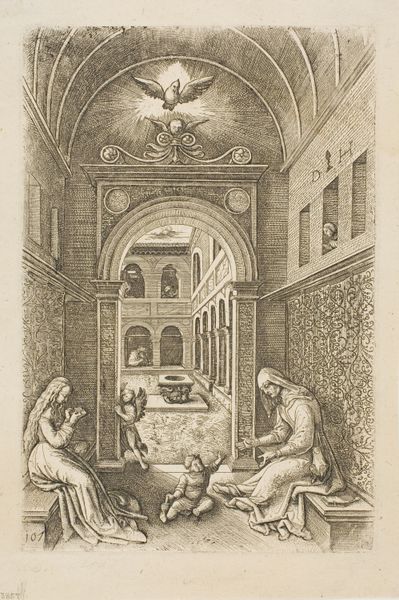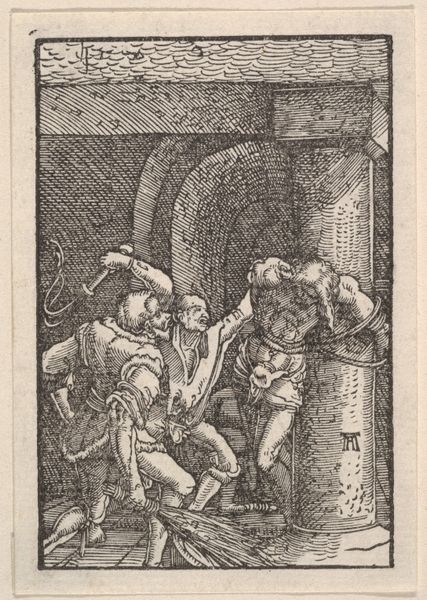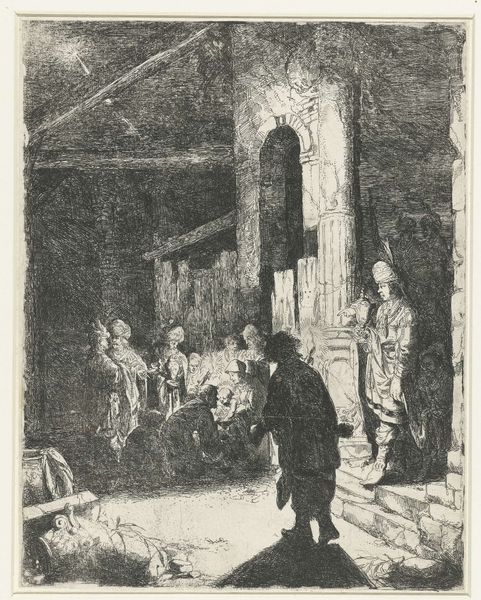
etching
#
dutch-golden-age
#
etching
#
landscape
#
genre-painting
Dimensions: height 157 mm, width 119 mm
Copyright: Rijks Museum: Open Domain
Curator: Welcome. We’re standing before Thomas Wijck's “Two Women by a Well in a Courtyard,” an etching dating from around 1626 to 1677. It's currently held in the collection of the Rijksmuseum. Editor: Immediately, I'm struck by the interiority. It feels cramped, enclosed, with all that brickwork looming over the figures. Despite the supposed activity, there's an undeniable stillness to it, a hushed quality that's quite compelling. Curator: Indeed, Wijck masterfully uses line to define space and texture. Note the variations in hatching that render both the solidity of the architecture and the relative lightness of the figures, all bound by the rigid structure of the composition. It creates a balanced yet subtly complex arrangement. Editor: Yet this scene whispers stories of daily life and domesticity. It raises questions about women's labor and the economic conditions shaping their roles. There is such a distinct contrast with images depicting courtly leisure or male authority, wouldn’t you say? Curator: Certainly, genre painting has that inherent potential, though it must be interpreted according to Wijck’s treatment. We observe a traditional perspective on subjects like this, focusing on formal aesthetics. Editor: But ignoring these nuances erases a substantial element of art's impact. The rough conditions, visible poverty—all speak to historical realities impacting women in the Netherlands during this period. These details subtly shape our understanding of women’s work. Curator: Undoubtedly a rich artwork with considerable impact through contrasting areas. Editor: And it underscores the critical need to situate artistic works in meaningful historical, social, and theoretical frameworks. The composition isn’t simply formal; it reflects societal relations.
Comments
No comments
Be the first to comment and join the conversation on the ultimate creative platform.

